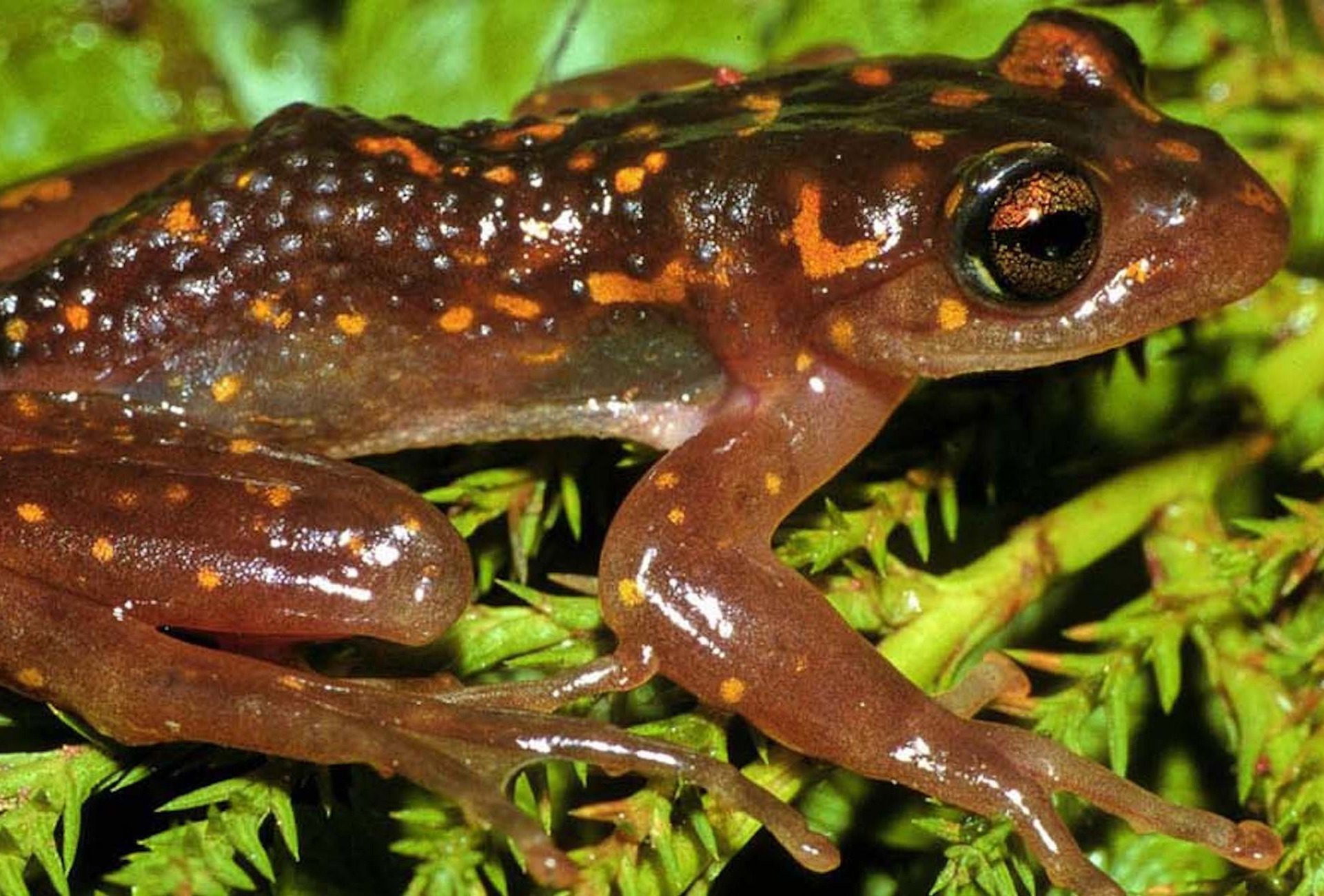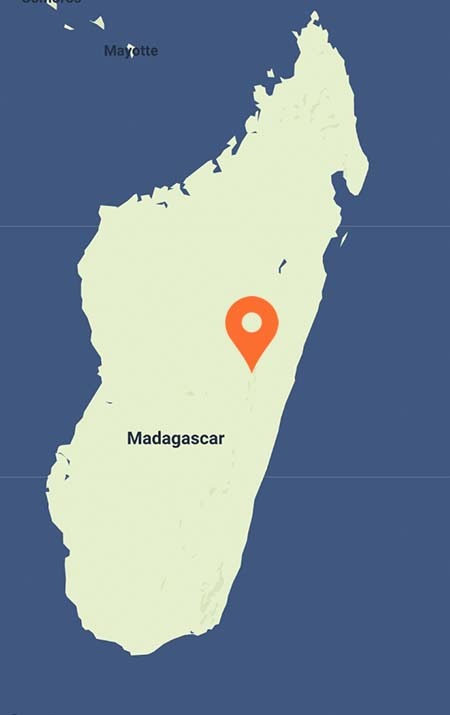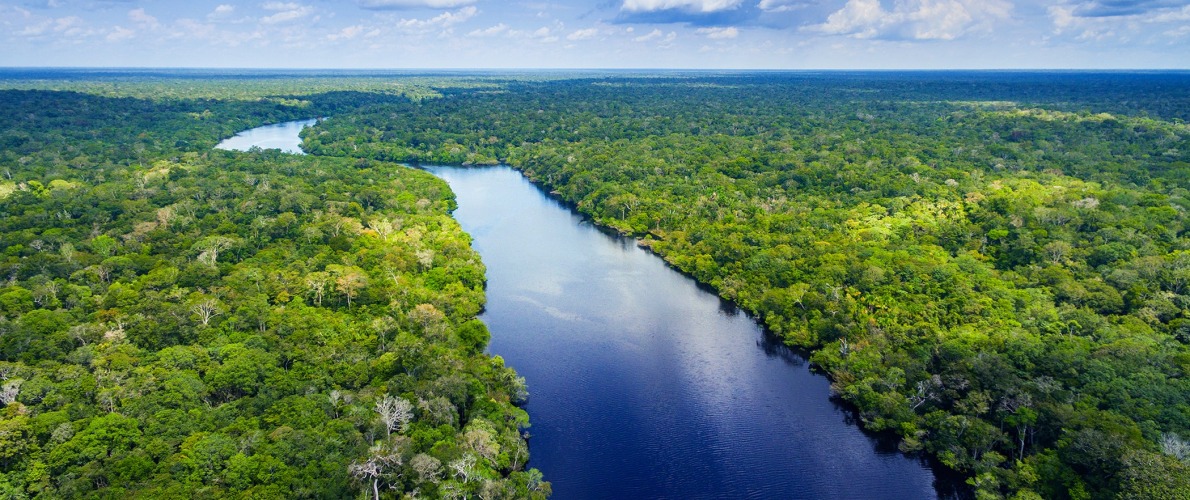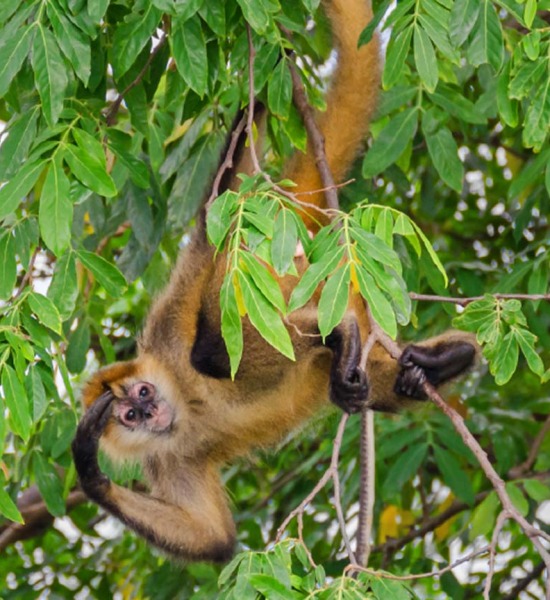
A Sanctuary for Ankaratra’s Amphibians
Support More Work Like ThisSupport More Work Like ThisAfter 90 million years of isolated evolution, the tropical island of Madagascar has one of the highest rates of endemism in the world.
-
Species at Risk
Williams bright-eyed frog (CR), Madagascar frog (EN), Marvelous gecko (CR)
-
Carbon stored
Not calculated*
*(metric tons of CO2 equivalents) -
Partner
Vondrona Ivon’ny Fampandrosoana (VIF)
-
20,558 Proposed Acres Conserved by
Designation
-
Project Cost: $51,175

20,558
After 90 million years of isolated evolution, the tropical island of Madagascar has one of the highest rates of endemism in the world.
-
Species at Risk
Williams bright-eyed frog (CR), Madagascar frog (EN), Marvelous gecko (CR)
-
Carbon stored
Not calculated*
*(metric tons of CO2 equivalents) -
Partner
Vondrona Ivon’ny Fampandrosoana (VIF)
-
20,558 Proposed Acres Conserved by
Designation
-
Project Cost: £38,477

20,558
An astonishing 90% of the plant and animal species on the island are found nowhere else. In total, seven plant families, five bird families, and five primate families are unique to Madagascar and surrounding islands. In the last 50 years, however, Madagascar’s environment has been devastated by logging and other extractive industries. Today, 90% of the original forest is gone, and consequences for the island’s terrestrial species have been dire.
As with other wildlife populations, amphibian and reptile numbers in the island’s mountainous interior have decreased dramatically. The Ankaratra Massif, an extinct volcanic range located in the center of Madagascar, is home to two Critically Endangered amphibians and a Critically Endangered gecko that survive in remnants of the region’s cloud forest. With much of their habitat gone, these animals face the real possibility of extinction. To provide a permanent sanctuary for these and other endemic species, Rainforest Trust is working with its local partner in Madagascar, Vondrona Ivon’ny Fampandrosoana (VIF), to establish a 20,558-acre protected area that will conserve an important piece of cloud forest habitat.
Explore the Ankaratra Massif

Green Bright-eyed Frog, Boophis viridis, from Andasibe


Biodiversity
With over 240 species identified to date, an impressive diversity of amphibians inhabit Madagascar’s natural environment. Ninety-nine percent of these are endemic, found only on the island. While population declines plague many of Madagascar’s amphibians, Williams bright-eyed frog – whose entire population is found within the proposed Ankaratra Massif Protected Area – is one of the most threatened.
With its range restricted to mountain-top ecosystems, the frog’s survival depends upon the continued existence of these isolated areas. Much of the cloud forest, however, that once covered these mountains has been destroyed and Williams bright-eyed frog now persists in forest relics. •Another Critically Endangered frog species native to the Ankaratra Massif, the Madagascar frog, faces a similarly grave situation. The entire population of this species is found along a stream within the proposed protected area. The total range of the Marvelous gecko, a Critically Endangered reptile, covers only 16 square miles. The proposed reserve will protect the last remnants of its original habitat. The Ankaratra Massif is frequented by 53 bird species. The proposed reserve shelters more than a third of these, a relatively high species-richness for Madagascar. Birds frequenting the area include the Madagascar Sparrow-hawk, the Madagascar Cuckoo-hawk, and the Madagascar Harrier-hawk. •Five species of tenrecs, a diverse shrew-like mammal family unique to Madagascar, are found in the Ankaratra Massif.
Challenges
According to conservative estimates, 40% of Madagascar’s primary forests have been cut down in the last 50 years; remaining forests have been thinned by 80%.
If current deforestation rates continue, all of the island’s rainforests – excluding those in protected areas and the steepest eastern mountain slopes – will be destroyed by 2025. Habitat destruction, poaching, and the illegal pet trade, seriously threaten many of Madagascar’s endemic species.
Communities
Composed of 20 ethnic groups, Madagascar’s human population maintains a diverse set of cultural traditions combining influences from India, Africa, Southeast Asia, and the Middle East.
Despite cultural and language differences, the majority of those living on Madagascar share a dependence on subsistence agriculture and more than 80% live below the poverty line.
Solutions
Since 2010, local organizations in Madagascar have been working to establish a protected area to ensure the survival of Williams bright-eyed frog, the Madagascar frog, and the Marvelous gecko. Temporary protected status for the area has already been achieved.
Working with its partner in Madagascar, Rainforest Trust will help achieve definitive protection status for the Ankaratra Massif Protected Area. In addition, Rainforest Trust will support fire suppression efforts and protected area enforcement over the next three years.



Partnering to Save the Rainforest
Our partners’ ability to work with their governments and build strong connections with local communities ensures the successful implementation of our projects.
Learn More About This PartnerLearn More About This Partner
